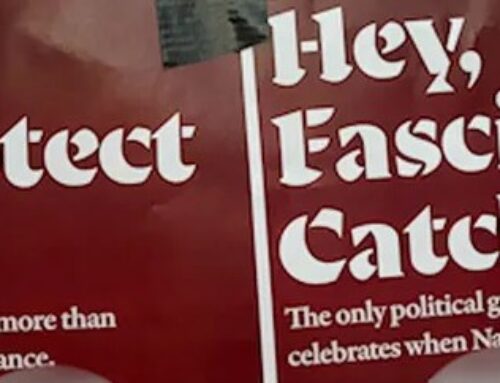[Part 3 of the post-Ferguson series]
“We each only get a piece of the elephant” – Massad Ayoob
Ask anyone who works in the judicial system and they’ll tell you that witness testimony is completely unreliable. People rarely see what they think they see and are prone to filling in the gaps where memory fails – the phenomenon is called confabulation.
Considering a person walking down the street and suddenly hears a gunshot. They turn towards the sound and see a man in a green jacket holding a gun while standing over a person on the ground screaming. Later, when interviewed, they will claim that they SAW the man in the green jacket shoot the man on the ground. They may actually even visualize it in their mind, and they may even believe it to the point of passing a lie detector test. The problem is that they never saw the man in the green jacket shoot anyone. Their brain started at Point A and ended at Point C – their imagination creates Point B.
Meanwhile, the man in the green jacket is actually a CCW holder who drew his gun defensively after the shot was fired by a criminal who immediately fled the scene. The CCW holder is guilty of nothing, but is now being accused of murder by an eyewitness who “saw the whole thing.”
The witness began the ordeal, to use the Col Cooper-ism, in Condition White – completely unaware the event was transpiring. And even thought they were oblivious to the opening seconds, and even though the witness eye is drawn to the most active dynamic and not to the event as a whole, witnesses are considered by some (for instance, reporters and those who follow their stories) to be 100% credible.
Obviously, the answer to such problems is cameras! Video never lies, right?
Wrong.
For instance, watch this video of a 2003 officer involved shooting which appears to show officers shooting an unarmed man in the back:
Now watch it from a second angle:
Cameras are two dimensional and only offer a single, limited view of any event. They often miss important pieces of the puzzle, like furtive movements, eye and facial expressions, assaultive behavior cues, what’s occurring out of frame, or what was said or done to lead up to the incident. What’s more, the images are only as good as the dissemination abilities of the people viewing them, which brings me to my point:
When watching a video most of us have no idea what we’re looking at!
What appears to be some sort of unnecessary force is often not the case at all. Most viewers have no knowledge of use of force laws, police procedures and why they are what they are, or even simple things like the Tueller Drill. After the fact viewers are also in condition white and first introduced to an event by a baiting, opinionated headline like Cop Shoots Unarmed Man In Back. Before we even watch the video we’ve been programed to look for a cop shooting an unarmed man in the back, and from the tone of the headline, to believe it was the wrong action for the officer to take. The headline, or the conversation overheard at work, or the post on social media, has provided the “B” for our A-B-C thought process, and most of us are not willing to break from it once emotionally vested in that conclusion, especially if it fits a narrative that supports our personal bias. Yes, it is possible the headline is true and the act was criminal. The headline could also be true, and the shooting proper. The headline could also be a complete fabrication.
So, my advice is this – when the next “national outrage” happens, remember that the mob is wrong more often than right, and try to apply these suggestions:
1- Don’t believe the hype.
2- Take a deep breath, park your emotions, and apply logic.
3- Ask questions. Don’t invent answers.
4- Admit and face your bias, whatever that may be, and understand how it is manipulating your logic.
5-Wait for all the evidence to be collected, analyzed, and made available before making up your mind. That may mean waiting for a trial to conclude so you can read the court transcripts. In this instant gratification society, we need to practice patience.
In other words, behave like you would want others to behave if your self-defense encounter was filmed and then vomited out of every electronic device owned by every armchair legal expert on the planet who comments on Facebook.
And so these men of Indostan
Disputed loud and long,
Each in his own opinion
Exceeding stiff and strong,
Though each was partly in the right,
And all were in the wrong!
So oft in theologic wars,
The disputants, I ween,
Rail on in utter ignorance
Of what each other mean,
And prate about an Elephant
Not one of them has seen!
Excerpt from THE BLIND MEN AND THE ELEPHANT – By John Godfrey Saxe





Leave A Comment
You must be logged in to post a comment.